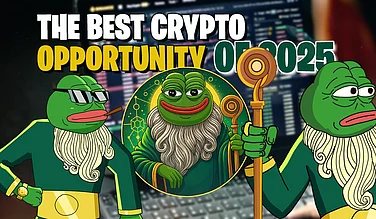Not so long ago, the internet was a site where one could read messages and send emails. Social media, mobile apps, and worldwide connectivity then revolutionized how we interact, shop, and communicate. Today, a new buzzword is raising its head in this ever-evolving cycle: Web3.
Web3 is typically framed as the next era of the internet—a decade characterized by decentralization, blockchain, and digital ownership. But beneath the headlines and high-profile funding, a lot of people are still wondering: What does Web3 actually do? And more significantly, is it delivering on its promise, or is it another buzzword?
To address these questions, we must rise above the hype and consider where Web3 is actually being utilized today, what it is solving, and what it still needs to overcome.
Here's an explanation of Web3 in simple terms:
The web has developed in stages. Web1 was the original web—simple, read-only websites. Web2 brought interactivity and user-created content, leading to social media, e-commerce, and apps. But in Web2, much of the control and benefits are in a few large tech companies.
On the other hand, Web3 is built on decentralized technologies such as blockchain. It looks to establish a web in which users control their data, enjoy more privacy, and can engage in open digital economies. Software applications on Web3—typically referred to as dApps (decentralized applications)—execute on public networks rather than on centralized servers.
Practical Applications of Web3 Today
1. Decentralized Finance (DeFi)

The highly common use of Web3 is in finance. Decentralized finance, or DeFi, is a site that allows individuals to control their money—such as saving, borrowing, or investing—without banks. Rather than depending on intermediaries, users communicate through smart contracts—self-executing programs on the blockchain.
Consider lending platforms such as Aave or Compound. They enable users to earn interest on their crypto by lending it out or borrowing against the crypto that they hold. These platforms do not use the conventional credit checks, so they are able to reach users everywhere in the world, particularly those countries with poor banking infrastructure.
2. Digital Ownership Through NFTs
Non-fungible tokens, or NFTs, are another central Web3 innovation. An NFT is an original digital token that demonstrates the title of a digital object—such as art, music, movies, or digital merchandise in video games. While most connect NFTs with expensive paintings, the technology has far wider utility.
NFTs assist creators in selling directly to customers, usually with embedded royalties from secondary sales. Artists, musicians, and even directors are monetizing their content in previously unheard-of ways using NFTs. It not only decreases reliance on major platforms but also provides creators with long-term returns from their work.
3. Transparent Supply Chains

Blockchain's power to record a permanent, tamper-evident history makes it well-suited to enhancing supply chain transparency. From fashion to agriculture, businesses are applying blockchain to track the history of goods from source to sale.
This allows consumers to check whether a product is authentic, ethically produced, or ecologically friendly. Food, pharma, and luxury companies are embracing blockchain to fight fraud, enhance safety, and enhance responsibility. This use is particularly salient since consumers want more responsible and transparent actions from brands.
4. Control Over Personal Identity
Web3 technologies are also making individuals more in control of their online identities. Currently, having access to any internet service typically entails surrendering one's personal information—email addresses, mobile phone numbers, and even biometric data. With Web3, individuals can own and control identities via digital wallets and decentralized identities.
This enables them to verify themselves without exposing unnecessary information. For instance, a user might confirm that they are above the age of 18 without exposing their birth date. Such systems would go a long way toward curbing data breaches and abuse, and enhancing online security and privacy.
5. Web3 in Gaming and Virtual Worlds
The Web3 technologies have been rapidly adopted by the gaming sector. In conventional games, users pay for in-game products that they cannot use outside of the game. However, in Web3 games, users can own digital products—such as skins, guns, or plots of land—as NFTs and sell them as they please.
Games such as Axie Infinity and The Sandbox are some of the pioneering examples of how decentralized virtual economies and play-to-earn models are becoming more popular. These also belong to the budding concept of the metaverse—a series of immersive, interconnected virtual spaces where individuals create, socialize, and work utilizing blockchain technology.
Is Web3 Ready for Widespread Use?
While the above examples indicate Web3 is more than theory, it's also the case that the space is early. There are large obstacles to overcome before Web3 goes mainstream. Most blockchain platforms are slow and expensive. Moreover, Web3 apps are cumbersome to use for individuals who are not familiar with technology.
Regulatory uncertainty is a further issue. Governments globally are yet to establish how they will regulate cryptocurrencies, NFTs, and decentralized platforms. Without clear laws, there will be hesitant adoption by businesses and consumers.
Looking Ahead
Web3 has gone from buzzword to building and implementation. It is being implemented and utilized in a variety of sectors from finance and art to logistics and gaming. These applications indicate that Web3 is not an abstraction, but rather a series of changing tools that have the potential to redefine the way we engage online.
That being said, we are not yet out of the starting gate. The potential of Web3 will take years to realize. Much will be contingent on making the user experience better, further reducing the costs and increasing access to the technology, and implementing equitable regulations that spur innovation but safeguard users.
In short, Web3 is not a magic pill, but it is a significant change in how we conceptualize ownership, trust, and value on the web. By emphasizing real-world challenges and creating pragmatic applications, Web3 developers are gradually bringing vision to life.

























